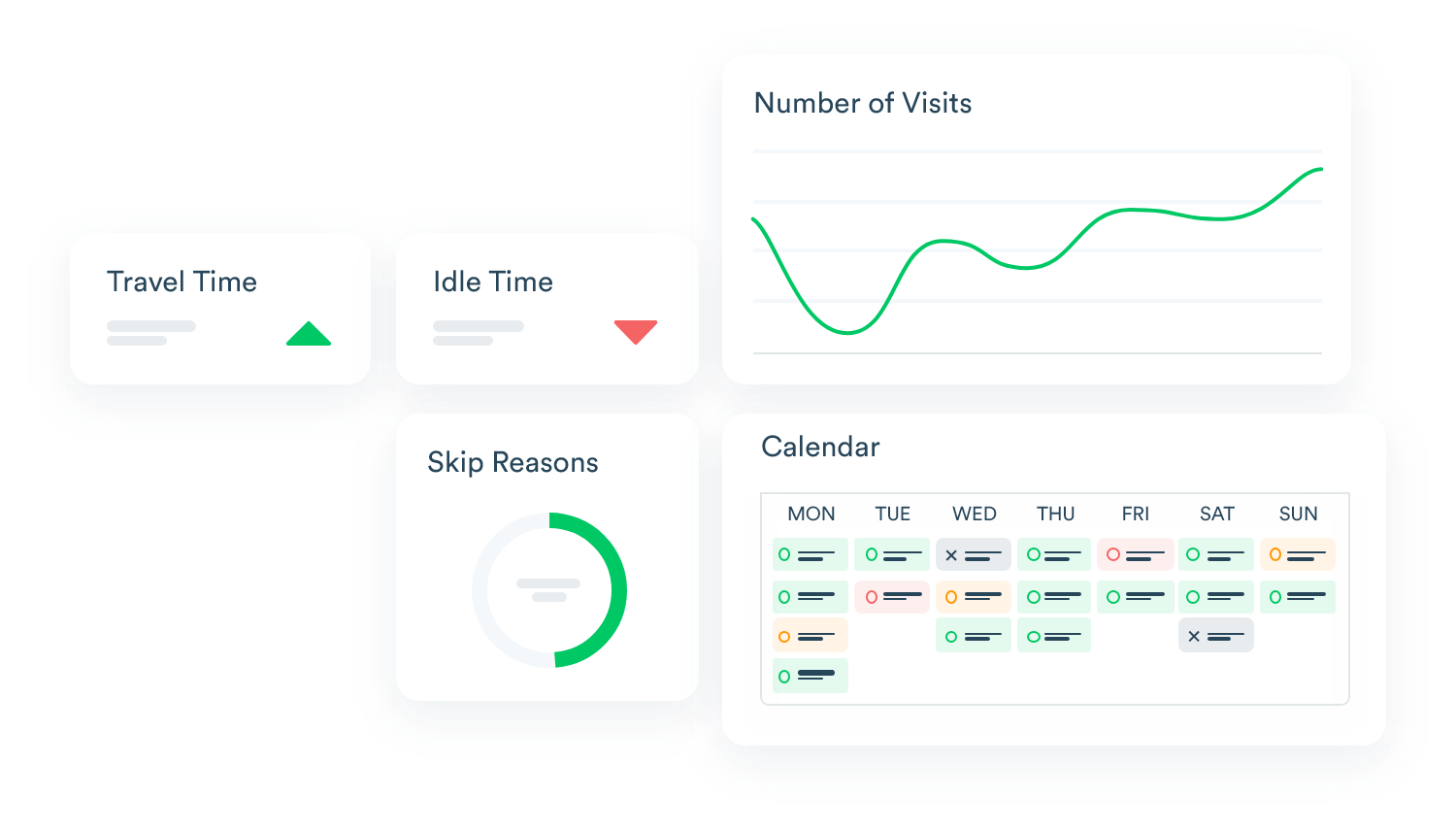What is Retail Execution: Audit Practices to Perfect In-store Presence
Understanding Retail Execution (REX) is the cornerstone of successful in-store presence for any consumer goods company. But it isn’t just about optimizing product placement on shelves – it’s also about making sure your brand strategy and promotions are visible to customers to ensure sales success.
Brands who undertake audits of their REX processes can uncover opportunities for optimizing visibility, product selection, merchandising standards, and overall customer experience while avoiding unnecessary costs from time-consuming efforts or lackluster execution strategies.
In this blog post, we’ll dive deeper into what REX involves, why an audit process is important, and how brands can leverage the insights gained from assessing their current practices against best industry standards.
What is Retail Execution (REX) and why it is important
Retail Execution (REX) is the crucial process of ensuring that consumer goods brands are being presented in the best possible light in retail environments. It encompasses everything from product placement and pricing to promotional displays and signage. In the world of fast-moving consumer goods (FMCG) or consumer packaged goods (CPG), the importance of REX cannot be overstated.
Brands invest heavily in creating products that meet the needs and expectations of consumers, and it is only through excellent retail execution that consumers will be enticed to purchase them. Regular audits and compliance checks are necessary to ensure that each store meets the standards required for a “perfect store.” As such, REX is not only important but also forms the backbone of most successful retail operations.
Benefits of consistent Retail Execution (REX) audit practices
Merchandising audit practices are crucial for any business that wishes to maintain a competitive edge in the market. One such practice is the REX audit, which involves a thorough evaluation of the share of shelf and planograms in a store. The benefits of consistent REX audit practices extend far beyond shelf placement and inventory management, as the data generated from these audits can help inform data-driven decisions that can improve business performance.
Consistent REX audit practices can bring a plethora of benefits to a business, especially when it comes to merchandising audit practices. By regularly conducting these audits, companies can maintain high standards for products on shelves, ensuring that they follow the planogram and achieve optimal share of shelf. The advantages of consistent REX audit practices stretch far beyond simple compliance and can lead to a more efficient and effective operation overall.
By maintaining a consistent REX audit schedule, merchants can gain deeper insights into their customers’ behavior, preferences, and demands, allowing them to tailor their offerings to meet evolving market trends. Ultimately, this can lead to increased customer satisfaction, higher sales, and boosting the bottom line.
Why does Retail Execution matter to Consumer Goods companies?
In today’s competitive market, consumer goods companies cannot afford to lose sales opportunities due to poor retail execution. The way products are displayed on shelves, their availability and pricing are all crucial in attracting and keeping loyal customers. Retail execution ensures that the products are placed in the right locations with optimal visibility and pricing, resulting in increased sales.
A strong focus on retail execution means that products are well-stocked, well-positioned, and accompanied by compelling promotional materials. Moreover, it also prevents switchers, who may switch to competitors’ products due to poor shelf display or unavailability of the preferred product. Consumer goods companies need to invest in retail execution to ensure that they remain competitive and meet customers’ expectations.
Successful execution of retail strategies can drive sales performance, increase customer satisfaction, and ultimately, help businesses thrive in a highly competitive environment.
Different types of REX audits to ensure compliance
Having a successful business means ensuring compliance in various aspects of operations. This is why different types of REX audits exist to support companies in achieving their goals while staying within the rules and regulations. Merchandising audits are conducted to oversee how products are displayed and stocked within stores, while trade promotion audits are focused on monitoring how promotions are being implemented. Sales audits help evaluate the overall performance of sales teams.
On the other hand, mystery shopping audits reflect the perspective of a customer and help businesses adapt to their needs more effectively. Finally, new product development audits are particularly helpful in making sure that companies make informed decisions when introducing new items to the market. It’s important to understand these different types of audits and use them in combination to ensure compliance and stay on top of industry trends.
Retailers have a lot on their plate when it comes to ensuring compliance and maintaining the best practices in their business operations. With numerous aspects to manage, one of the critical areas that require attention and audits focus on different types of REX. Merchandising and trade promotion, sales, mystery shopping, and new product development audits are some of the most crucial types of REX audits that retailers engage in today.
These audits are critical in ensuring that retailers maintain the utmost compliance and execute their operations within the required regulations and best practices. By scrutinizing different areas of the business, retailers can ensure that their approach to doing business is optimal and constant improvements are made to ensure success.
What Should Get Measured in Store?
When it comes to measuring the success of a store, availability must be a key factor. No customer wants to walk in and find that the product they need is out-of-stock. This can lead to frustration, disappointment, and ultimately, lost sales. It’s important to keep shelves well-stocked and to avoid any potential stockouts.
With a system in place for tracking inventory, retailers can make faster and swifter decisions when it comes to restocking their shelves and ensuring that customers have access to the products they need. By doing so, retailers can increase customer satisfaction and drive sales.
In addition to availability, retailers must also focus on pricing in store. Prices should be competitive and attractive enough that customers are enticed to shop. By offering promotions and discounts, retailers can drive a higher rate of customer acquisition and sales volume. Implementing a dynamic pricing strategy is also beneficial for businesses, as it allows them to adjust prices more easily depending on their customers’ preferences and demand.
Overall, understanding the importance of REX audits and making sure that different areas of a store or business are monitored carefully can help a business stay ahead of their competitors. By staying on top of trends and customer demands, retailers can better plan their strategies to maximize performance. With consistent evaluation and improvement practices in place, retailers can make sure they remain
To guarantee compliance, a comprehensive Retail Store Audit would encompass the following aspects:
- Availability and Stock Levels: Ensure both shelf stock and back stock are well-maintained.
- In-store Product Location: Clearly identify where products are located, whether on shelves, gondolas, fridges, or standalone displays.
- Promotion and Pricing Compliance: Ensure adherence to promotional offers and pricing strategies.
- Planogram Compliance: Follow the agreed planogram, including correct shelf location, number of facings, number of SKUs, and accurate shelf tags.
- Competitor Analysis: Monitor competitor placement, promotions, pricing, and overall activity.
- Quality of In-store Displays: Maintain high standards for in-store displays and promotional materials.
- Retail Order Management: Promptly replenish stock to meet customer demand.
By focusing on these areas, retailers can enhance their operational efficiency and deliver a seamless shopping experience to customers.
Tips to perfect in-store presence with REX audit practices
As a retailer, having a strong in-store presence is crucial for success. One effective way to accomplish this is through REX audit practices. By using a merchandising checklist, retailers can ensure that their products are displayed correctly and organized neatly on shelves. But it’s not just about the products – employee training is also essential.
A well-trained staff can provide better customer service and answer any questions that shoppers may have. Retail execution software is also a useful tool for staying on top of in-store tasks and monitoring progress. With these tips and a commitment to continuous improvement, retailers can perfect their in-store presence and boost sales.
Analyzing store performance to drive better results
By using the right metrics, retailers can gain valuable insights into their operations and improve their business performance. Data from REX audits can be used to track sales trends, identify areas of improvement, and measure customer satisfaction in stores. Additionally, analysis of store data such as inventory levels, promotion spend, product assortment and store traffic can help retailers develop a better understanding of their customers and optimize their strategies accordingly. With the right metrics, retailers can make informed decisions to drive better results and maximize performance.
By regularly conducting REX audits, retailers can stay up-to-date on industry trends and ensure compliance while also maintaining the best practices in business operations. It’s important to understand the different types of audits and use them in combination for maximum benefit. By leveraging REX audit practices, retailers can also perfect their in-store presence and analyze store performance to drive better results. With these tips, retailers can remain competitive and stay ahead of their competitors.
From identifying areas of improvement to analyzing store performance, conducting regular REX audits is essential for any business in the retail industry. By diligently monitoring different aspects of their operations, retailers can ensure that their stores remain competitive and compliant with industry regulations. With these tools at their disposal, retailers can make sure they are always up-to-date on trends and make better decisions for long-term success.
Common mistakes to avoid when conducting an REX audit
Conducting an REX audit can be a complex task, requiring a keen eye for detail and a thorough understanding of the process. However, certain mistakes can make the process even more challenging and ultimately compromise its effectiveness. One common pitfall to avoid is inconsistency in collecting data, which can lead to inaccurate conclusions and recommendations.
It is also crucial to ensure that visits are conducted with the appropriate frequency, avoiding gaps that could result in inaccurate evaluations. Finally, accuracy is of the utmost importance when collecting data, as even minor inaccuracies can have a significant impact on the overall results of the audit. By keeping these factors in mind and taking a proactive approach to avoiding common mistakes, you can ensure that your REX audit is thorough, effective, and ultimately successful.
How technology can help streamline the REX audit process
In the world of retail, the REX audit process can be quite grueling. However, with advances in technology and the use of data-analytics, it’s now possible to streamline this process and avoid the headaches that come with it. One such tool that’s gaining traction is SaaS-based software called Shelvz.
This powerful system allows retailers to easily manage their auditing process and quickly identify areas that need improvement. With its easy-to-use interface and advanced reporting features, retailers can now focus on improving the customer experience rather than getting bogged down in the auditing process. By leveraging the power of technology, retailers can now take their REX audits to the next level and stay ahead of the competition.
In today’s competitive retail landscape, it’s essential for retailers to stay on top of their operations and ensure that they are compliant with industry regulations. Conducting regular REX audits is an effective way to achieve this, but it can be a difficult process that requires careful planning and execution. By properly leveraging the right tools and avoiding common mistakes, retailers can stream
Getting the most out of your Retail Execution field team
In conclusion, Retail Execution (REX) is incredibly important for Consumer Goods companies. It is the process of ensuring that a company’s overall message or brand is executed well in store. Having consistent audit practices and measuring what should be measured in store will improve shelf presence and ultimately increase profit margins. However, effective REX audits cannot be performed without proper planning and strategizing beforehand. Additionally, common mistakes to avoid are focusing on limited metrics and overlooking certain areas such as non-merchandised items.
Technology can help streamline the REX audit process which makes it easier to ensure compliance with all your specifications. Above all, successful Retail Execution is paramount for Consumer Goods companies so they can continue to meet their sales objectives and compete in their respective markets.



